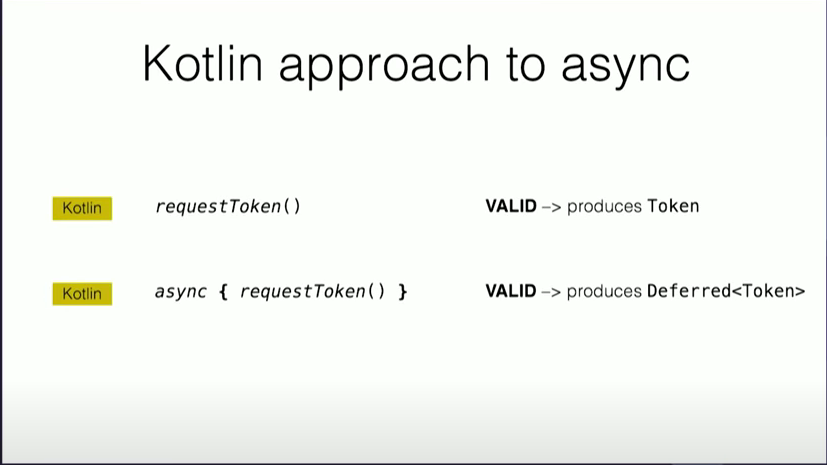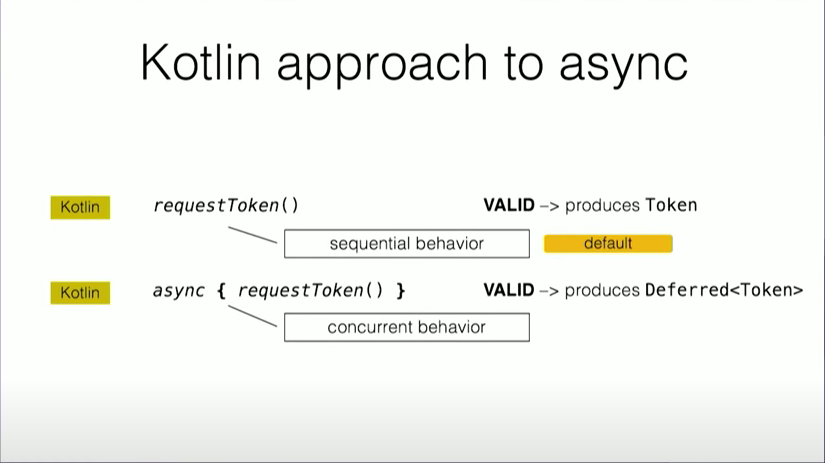
Asynchronous Programming
- Callbacks : 코드가 매우 복잡해짐. 콜백지옥. 예외처리 쉽지 않다.
- Rx/Promises/Futures : Compose하는 형식, 예외처리도 더 좋음(propagation). 아예 새로운 프로그래밍 방식을 학습해야함.
- Coroutines : 직관적인 코드로 목적을 달성할 수 있음. suspend등 몇가지 키워드만 붙이면 일반적인 코드(H/O, try/catch, loops...)랑 완전 같음. (looks natural)
Suspending Functions
- thread를 block하지 않고, suspend function을 호출 한 부분에서 suspend했다가 작업이 완료되면 돌아올 수 있다.
Coroutine Builders
- suspend function을 쓸 수 있는 세계를 build
- launch
public fun CoroutineScope.launch(
context: CoroutineContext = EmptyCoroutineContext,
start: CoroutineStart = CoroutineStart.DEFAULT,
block: suspend CoroutineScope.() -> Unit
): JobAsync
- C# async & await
- async(a coroutine builder, not a keyword), await(function), Deferred(Future)

Coroutines?
- Light-weight Thread
- 10만번 1초 정지후 점찍기(
println('.'))- Thread : OOM (heavy)
- Coroutines : No Error (light-weight)
fun main(): Unit = runBlocking {
val jobs = List(100000) {
launch {
delay(1000L)
print('.')
}
}
jobs.forEach { it.join() }
}Java Interop
- future coroutine builder
Beyond asynchronous code
- 피보나치 수열
fun <T> sequence(@BuilderInference block: suspend SequenceScope<T>.() -> Unit): Sequence<T>
// runs synchronous with invoker?
val fibonacci = sequence {
var cur = 1
var next = 1
while (true) {
yield(cur)
val temp = cur + next
cur = next
next = temp
}
}
val iter = fibonacci.iterator()
println(iter.next())어제 봤던 영상과 비슷한 내용이 어느정도 있었다.
아직은 뜬구름 잡는 느낌이 없지는 않다.
이해력 부족
